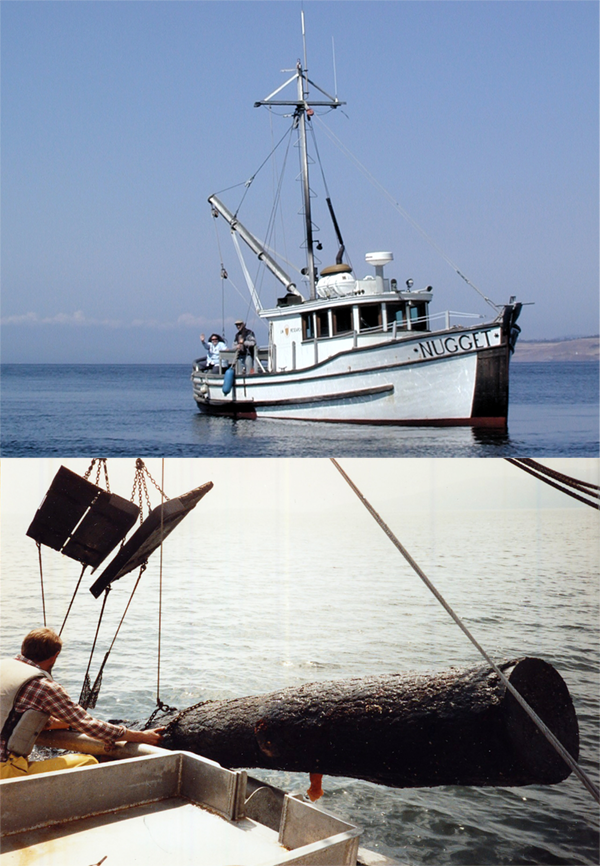The R/V Nugget by Craig Staude
The
Nugget was a 42’ double-ender wooden salmon troller built in the late 1940s. Later it was enjoyed recreationally by Dr. John Bell and family, residents of San Juan Island, who generously gave the boat to the Labs in the 1980s. With the help of Dr. Bob Donnelly at UW School of Aquatic and Fishery Sciences and the skills of our talented Maintenance crew, we converted this “troller” into a “trawler,” capable of using much of the same gear as the
Hydah as well as a remotely operated vehicle (ROV).
As Marine Techs, David Duggins and I had considerable experience operating small boats, but we had never captained a boat of this size for scientific collecting. This is where Cleave once again proved invaluable, stepping in to train us in collecting methods and local sampling spots. Director Dennis Willows also participated in the training and became one of the three skippers of the
Nugget.
Although small, the
Nugget was powerful and quite capable of rock dredging or trawling in the strong currents of the San Juan Islands. The original anchor winch was moved from the bow to the stern and fitted with a stainless steel cable, marked at regular intervals. The winch had no level-wind, so we had to push the cable by hand onto the drum while adjusting the rudder. No fingers were lost!
Some of our most memorable trips were to Bellingham Bay in search of the big pink sea slug
Tritonia, used for neurological research by Dr. Willows and his students (see Bill Frost's
Sept 2016 Tide Bite). Often in that bay the net would fill with heavy mud or waterlogged wood chips, or worst of all, with a barnacle-covered submerged log that took forever to extract from the net (Figure 4). Perhaps the funniest incident was the time we brought the trawl to the surface to find a very large orange sea anemone wearing sunglasses, staring right at us!

The shortcoming of the
Nugget was its small size. The deck only accommodated eight or ten students comfortably around the sorting table, and usually allowed taking only half of a class on each trip. Nevertheless, for trawling and dredging the mechanics of dragging from the stern rail and dropping the catch directly into the sorting table were quite efficient. The
Nugget remains my favorite boat.
Fig. 4: R/V Nugget on a trip to Iceberg Point, Lopez (top); waterlogged log and mud in Bellingham Bay (bottom).